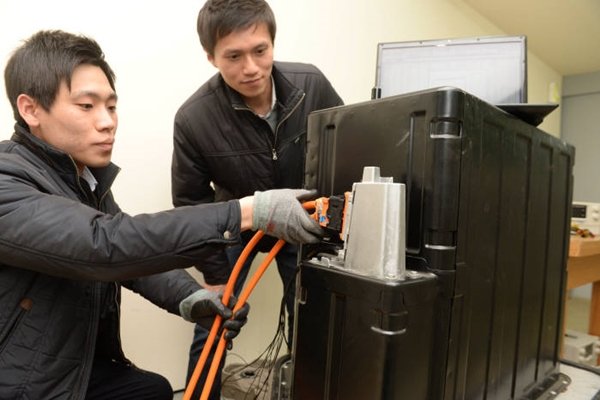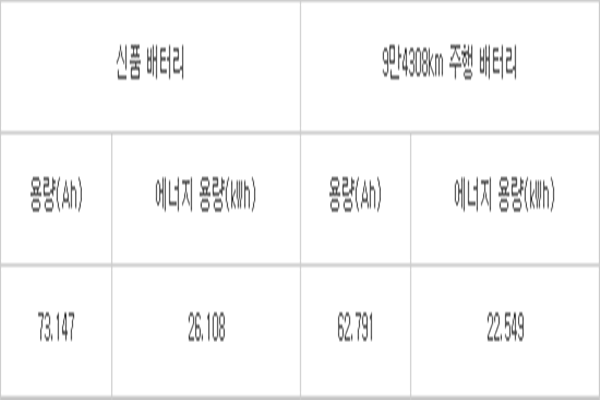It was confirmed that battery of an electric vehicle that drove for 100,000km for 3 years has maintained 86% of original discharge ability. Theoretically it is proved that an electric vehicle can drive more than 200,000km with single battery and this is almost more than double the guarantee age (100,000km) of a battery that was regulated by corresponding electric vehicle manufacturers. It seems that this will be an opportunity that will solve any concerns that charge and discharge performance of electric vehicles’ batteries might drop significantly after certain period of time just like batteries of Smartphones.
According to tests that were done by Korea Testing Laboratory (KTL), which were requested by The Electronic Times, on charge and discharge performance of a battery of Renault Samsung’s electric vehicle (SM3 Z.E.) that has 94,308km of mileage, discharge energy capacity and discharge capacity came out to be 86.37% and 85.84% respectively compared to an original battery.
Compared to a new product with same standards, battery capacity and energy capacity were reduced by only 14%. This value is not even half of industries’ predictions that thought that batteries’ performance will normally be reduced by 30% after 100,000km. Although electric vehicle manufacturers and battery manufacturers had tested durability and battery life on their own, this is the first time when durability and battery life were verified by a government’s official testing organization.
South Korean and foreign electric vehicle manufactures guarantee about 100,000km of battery life; Renault Samsung also guarantees 100,000km of battery life and clearly states that performance of battery will decline by 30% after 100,000km.

Physical capacity (rating capacity: 22kWh) of a battery of a test vehicle was 27kWh at the time when this battery was released and it was tested that it can use 22.5kWh of electric energy during the tests. Considering that a 22kWh battery, which is verified by Ministry of Environment, allows an electric vehicle to drive up to 135km, it is possible to drive a new electric vehicle with this battery without losing any mileage.
This result can be seen as a result that shows characteristics of electric vehicles’ charging pattern that is different from normal electronics’ charging pattern. Generally while a battery of a portable device needs to be charged when there is almost no remaining battery, a battery of an electric vehicle generally needs to be charged to 70 to 80% when remaining battery is between 30 and 40%. Speed of reduction of battery life has been slowed down as an amount of roles that individual battery needs to handle regarding charge and discharge has been eased.
“As number of electric vehicles that are equipped with batteries with high capacity is increased, reduction of performance of batteries will be even slower with this charging pattern.” said Professor Park Cheol-wan (Formal Director of Korea Electronics Technology Institute’s Battery Research Center). “Result of these tests will have significant impact on prices of electric vehicles, depreciation of batteries, and recycling of batteries in the future.”
This test vehicle uses a battery from LG Chemicals and it had been used as a car-sharing vehicle for 35 months since January of 2014.
Staff Reporter Park, Taejoon | gaius@etnews.com
